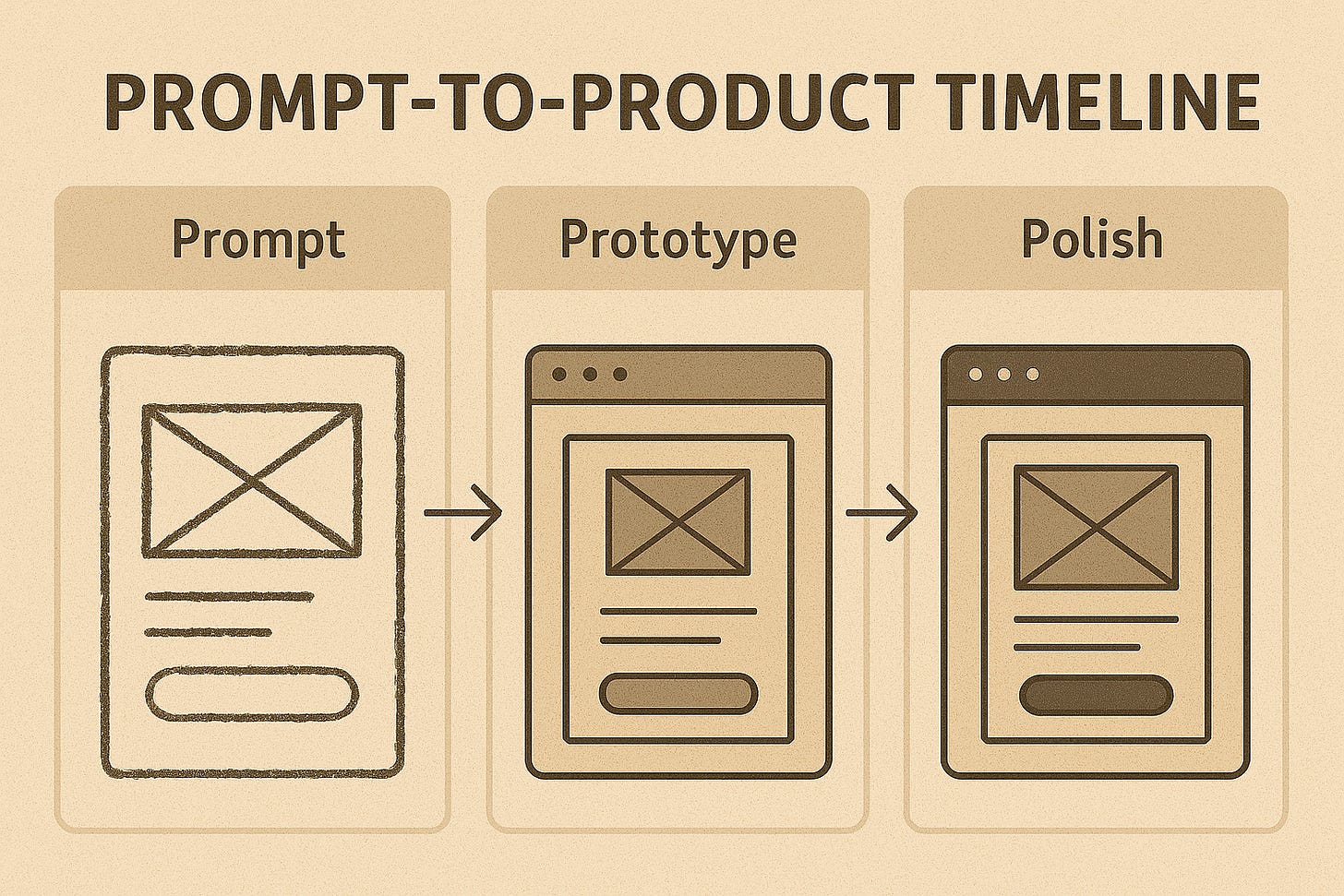The Rise of AI Coding
Why Prototyping Relentlessly is the New Strategic Edge
What Is AI Coding—and Why It’s More Than a Trend
“Vibe coding” is the buzzy name. But underneath the hype, something deeper is happening. What we’re really seeing is the rise of AI coding: building products, prototypes, and creative tools using natural language and AI agents instead of traditional code.
You describe what you want. The AI builds it.
This isn’t just a shortcut. It’s a structural shift in how ideas go from brain to build. And it’s turning the old idea of the MVP (Minimum Viable Product) on its head. The question used to be: How fast can you code? Now it’s: How fast can you iterate?
When AI Builds the Code, Your Job Is to Build the Concept
Tools like Lovable, Cursor, Replit, and GPT-based UI assistants aren’t just making it easier to build — they’re flattening the technical playing field.
If anyone can spin up an app in an afternoon, the technical moat disappears. What you build matters less than why, for whom, and how precisely it resonates.
This is where the human edge comes in.
Strategy. Taste. Empathy. Market timing. These are the new moats. And they’re all sharpened by one habit: prototyping relentlessly.
Prototype Relentlessly — Not Just to Build, But to Learn
Rapid prototyping used to be a technical discipline. With AI coding, it becomes a creative one. It’s not about getting to launch. It’s about getting to clarity.
Each prototype is a test: of tone, of experience, of value. It’s a way to surface assumptions you didn’t realize you were making. A way to see your idea in motion — and decide if it still makes sense.
When AI accelerates the build process, your constraint shifts from time to taste. Your job isn’t to build fewer things better. It’s to build more things faster — so you can refine what actually matters.
Here's how the process often unfolds today — not in a linear dev sprint, but in fast, AI-assisted cycles of iteration:
From MVP to MAP: Minimum Amazing Prototype
In this world, shipping something that technically works isn’t enough. You’re not competing on functionality alone. You’re competing on feeling.
What’s the emotional resonance of your product? What’s the story arc of the first experience? Does the interface feel obvious or surprising? Welcoming or transactional?
Your job, as a founder, maker, or creative, is to translate intention into interaction. That’s not a coding challenge. It’s a prototyping one.
AI Coding Is a Mirror for Your Thinking
AI will build what you ask for. But the quality of what it builds depends on the quality of your prompts, your instincts, your synthesis.
That makes AI coding a mirror: reflecting your assumptions, your clarity, your strategic gaps. If your prompt is vague, the result will be muddy. If your idea is sharp, the result will sing.
This is why prototyping isn’t just execution — it’s discovery. Each interaction with an AI agent teaches you something: about what you want, what you’re unclear on, and what actually matters to users.
The New Edge Isn’t Technical — It’s Experiential
In a world where building is fast and cheap, experimentation becomes the advantage. AI coding isn’t about cutting corners — it’s about cutting lag time between idea and insight.
You don’t need to wait for a sprint cycle. You don’t need to hand off to a dev team. You can test a concept in an afternoon. And that’s not just liberating — it’s strategically potent.
Because when the market shifts fast, the winners aren’t the ones who polish the longest.
They’re the ones who prototype the smartest.
And then do it again tomorrow.


